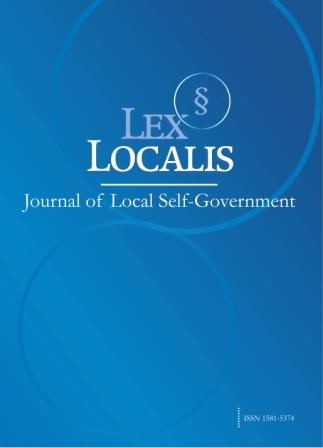The Digital Marketing Strategy for Artworks in the Post-Epidemic Era
DOI:
https://doi.org/10.52152/800028Keywords:
artwork, online marketing, media communicationAbstract
Since 2020, the traditional galleries' offline exhibitions and sales have been hindered by the epidemic. Meanwhile, emerging online art trading platforms have gradually become mainstream and taken advantage of the communication benefits of online platforms and multimedia technology to create new art consumption models. With the gradual relaxation of the epidemic's normalized controls, the art market has rebounded. Online art marketers must now consider how to leverage media communication and technological advantages of service providers such as e-commerce platforms to adjust their marketing strategies and improve their operating models. They need to take into account the consumption trends and consumer needs of art consumers formed during the epidemic.
References
Source:A survey of the impact of COVID-19 on the Chinese art industry. 2020.2
Li Yuntuan. Research on the Communication of Artwork Online Trading Platform under the Threshold of Innovation Diffusion Theory [D]. Shanghai University, 2021. DOI:10.27300/d.cnki.gshau.2021.000661.
Kuang W.B.,Deng Y. Media availability: Social Platforms Empower the Emotional Expression of Fan Communities[J]. Jiangxi Social Science,2022,42(07):168176.
Hiscox online art trade report 2021 https://www.hiscox.co.uk/onlinearttradereport
Data source: WEIQ influencer marketing platform, which was obtained through iclick network research in January 2022
Source: China Business Industry Research Institute https://www.askci.com/reports/
Theodore Levitt (U.S.), translated by Xin Hong: Marketing Imagination [M], Machinery Industry Press, 2007(6):119.
Maslow.Motivation and Personality [M]. Translated by Xu Jinsheng. Beijing. Huaxia Publishing House, 1987.
[1] Zhang Yingchao. Research on Online Marketing Model of Artworks in China [D]. Luxun Academy of Fine Arts, 2022. DOI:10.27217/d.cnki.glxmc.2022.000033.
Data source: Surgeon: Artron Art
Qu Weihai. The Way to Create Change in DTC in the Digital Era[J]. China Advertising, 2022(01):6566.
Shi Hong. Opening and Prospecting - Integrated Marketing Communication of Artwork [D]. Zhejiang University, 2010.
Zhang Xiaolei, Huang Shanshan. Research on Brand Experience Design Based on Social Media[J]. Design,2023,36(04):2729.DOI:10.20055/j.cnki.10030069.000484.
Zhao Fangru. Online digital art sales and its environmental impact [J]. Screen Printing, 2022,(24):64-66
Lin Qunfeng. Using blockchain technology to empower the management of information asymmetry in art transactions [J]. Learning Monthly, 2023, (1): 38-40
Chen Xiaoru, Wu Jing, Zhang Hongyi. Research on the application of big data and virtual reality in art e-commerce [J]. Modern Business, 2023, (2): 20-23
Li Yuntuan. Research on the Communication of Art Network Trading Platforms from the Perspective of Innovation Diffusion Theory [D]. Shanghai University, 2021. DOI: 10.27300/d.cnki.gshau.2021.000661.
Research on Brand Communication Strategy in the Social Media Era [J]. Chen Pu Qiuhang. Media Observation, 2019(12)
Analysis of Fan Economic Operation Mode in the Internet Era——Taking "Xiaomi Community" Research as an Example [J]. Cui Xinxin. Economic Research Guide, 2019(30)
Gao Feng. Research on the Trading Mode of Chinese Art Market [D]. Hebei Normal University, 2013.
Dou Erxiang. How to Build a Unified Art Market [J]. China Auction, 2022, No.191(06):65.
Zeng Yingnan. Research on Online Promotion Strategies of Painters in the Self-Media Era [D]. Minzu University of China, 2021. DOI: 10.27667/d.cnki.gzymu.2021.000423.
Han Bo, Ji Jiahui. Media Art Platform for Public Participation——Research on the Art Communication of Mobile WeChat Platform [J]. Science and Technology and Innovation, 2016, No.72(24):30-31.DOI:10.15913/ j.cnki.kjycx.2016.24.030.
Ji Biao. Research on the Operation Mechanism and Countermeasures of Domestic Artworks in the Internet Context [D]. Southeast University, 2018.
Chen Rui. Design and Implementation of Art Trading System Based on Blockchain [D]. East China Normal University, 2022. DOI: 10.27149/d.cnki.ghdsu.2022.002093.
Wang Yirui. Analysis on the Development of Chinese Art Market under the New Media Environment [J]. China Press, 2021, No.527(22): 48-49. DOI: 10.13854/j.cnki.cni.2021.22.022.
Wang Shuo, Song Yang. On the Development Dilemma of my country's Art Market and the Reconstruction of the Ecosystem [C]//Science and Engineering Research Center.Proceedings of 2020 International Conference on Advanced Education, Management and Social Science(AEMSS 2020).Atlantis Press, 2020: 4. DOI: 10.26914/c.cnkihy.2020.016583.
Wei Huilan, Guan Shunfeng, Zhao Chen, Zhang Xuehui, Zhang Yijing. Research on the User Experience Improvement Path of Art Trading APP under the Background of 5G Era [J]. Packaging Engineering, 2022,43(12):359-364.DOI:10.19554 /j.cnki.1001-3563.2022.12.045.
Ding Yu. Research on Scene Marketing of Art Comprehensive APP [D]. Nanjing University of the Arts, 2021. DOI: 10.27250/d.cnki.gnjyc.2021.000062.
Jiang Yu. Research on the use of art app media [D]. Nanjing University of the Arts, 2019.
Yao Yaqi. Research on Internet Marketing of Paintings and Artworks Based on Interactive Experience [D]. Jiangsu University, 2020. DOI: 10.27170/d.cnki.gjsuu.2020.000808.
Dou Erxiang. How to Build a Unified Art Market [J]. China Auction, 2022(06):65.
Si Si. Research on Art Classification Method Based on Multimodal Fusion [D]. Beijing University of Chemical Technology, 2022. DOI: 10.26939/d.cnki.gbhgu.2022.001122.
Zhang Qiao. Works of Art as Displayable Emotional Forms——Based on Wittgenstein's Deconstruction and Reconstruction of Emotional Expression in the Later Period[J]. Marxist Aesthetics Research, 2021,24(02):246-257+ 730.
Downloads
Published
Issue
Section
License
Copyright (c) 2025 Lex localis - Journal of Local Self-Government

This work is licensed under a Creative Commons Attribution-NonCommercial-NoDerivatives 4.0 International License.








